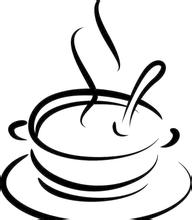The difference of flavor description and taste treatment between washing method and sunburn method
The difference of flavor description and taste treatment between washing method and sunburn method
The adhesion of the mucous membrane is very strong and is not easy to remove. It must be placed in the slot for about 18-36 hours to make it alcohol and decompose the mucous membrane. There are two methods of fermentation, namely wet hair alcohol and dry hair alcohol, as the name implies, the former adds water, the latter does not add water. In the process of producing alcohol, the seeds and internal pulp will produce special changes, which is one of the steps that most affect the flavor of coffee. Some farms add hot water or alkanolins to speed up the production of alcohol, which has a negative impact on quality and is not popular with selected coffee lovers. After washing, at this time, the coffee beans are still wrapped in the pericarp with a moisture content of 50%. They must be dried to reduce the moisture content to 12%, otherwise they will continue to be mellow, moldy and rotten. The better treatment is to use sunlight to dry, although it will take 1-3 weeks, but the flavor is very good and very popular. In addition, machine drying is used in some places, which greatly shortens the processing time and makes the flavor not as good as that of sun-dried coffee. 1. Choose beans:
Put the harvested fruit in the water tank, and the ripe fruit will sink, while the unripe and overripe fruit will float up and can be removed.
2, dry:
Put the selected ripe fruit in the square and expose it to the sun for 5-6 days until it is fully dry. At this time, the fruit becomes dark brown and the moisture content is 13%.
3, shelling:
After drying, the peel becomes fragile and easy to fall off, and can be removed by machine. Farms run by enterprises usually have their own shelling factories, while small farms are processed by processing centers.
Next, use tall wooden frames or whole scaffolding for the sun to avoid the risk of beans smelling on the ground. In the process of exposure, take good care of the beans so that the coffee beans can be evenly exposed to water; every three to five days, coffee workers will manually screen out defective and moldy beans. Therefore, by the time the exposure is completed, before the beans enter the market to remove the peel and flesh, a bright crimson coffee cherry is already a grade with few defects.
This method is extremely common in Brazil. The natural washing method is very similar to the water washing method, except that the natural washing method uses a high-pressure washing machine to remove the mucous membrane of the coffee surface, thus skipping the fermentation process. Several raw coffee processing companies in Brazil and Colombia have patented this method and have become local natural water system processing monopolies. The amount of water used in this method is much lower than that of washing hair, so some people are used to calling it "semi-drying (Semi-Dry)". Because there is no fermentation, coffee beans do not exist (or only have a very low risk of fermentation), and the overall quality of coffee is more constant. Unfortunately, the taste of coffee tends to be flat because it is not fermented. As a result, growers will not use natural washing for ultra-high quality coffee beans. Most raw bean purchasing companies also rarely buy coffee processed by natural washing. Almost all the producing areas of Costa Rica use honey treatment. This method is also widely spread throughout Central America.

Important Notice :
前街咖啡 FrontStreet Coffee has moved to new addredd:
FrontStreet Coffee Address: 315,Donghua East Road,GuangZhou
Tel:020 38364473
- Prev

The difference between semi-washing and half-sun treatment Coffee Bean Flavor description introduction to Manor
According to the manor, the most sensible and practical way is to classify them into three major coffee growing areas in the world: Africa, Indonesia and Central and South America. Generally speaking, coffee grown in the vicinity has similar characteristics. If a particular bean is out of stock, the manufacturer and buyer of the comprehensive product will usually look for it.
- Next

How to hold down the milk from scratch-learn to make coffee from scratch
How to hold down the milk from scratch-learn to make coffee milk from scratch: the milk used in latte drinks has a fat content of about 3%. The less fat, the harder the foam. What you want is smooth foam (so forget about fat-free cappuccinos). About foam: the main thing to keep in mind when making foam is that when the temperature reaches the right point
Related
- What is the meaning of lactic acid fermentation with coffee bean treatment?
- How to judge the state of foam by sound?
- How does the latte pull out the unicorn pattern? Come to get for a little trick to improve the flower pull!
- Will flower pulling affect the taste of the latte?
- Do you know the history of coffee?
- The difference between honey treatment and sun washing what is raisin honey treatment?
- What kind of milk can a novice use to make coffee foam to keep the foam longer? The correct method and skills of milking tutorial sharing
- Why do washed coffee beans taste sour? Flavor characteristics of washed Coffee
- Introduction to the skill of how to practice the size and height of water injection around the circle of hand-brewed coffee
- How do beginners practice coffee flower drawing from scratch?

